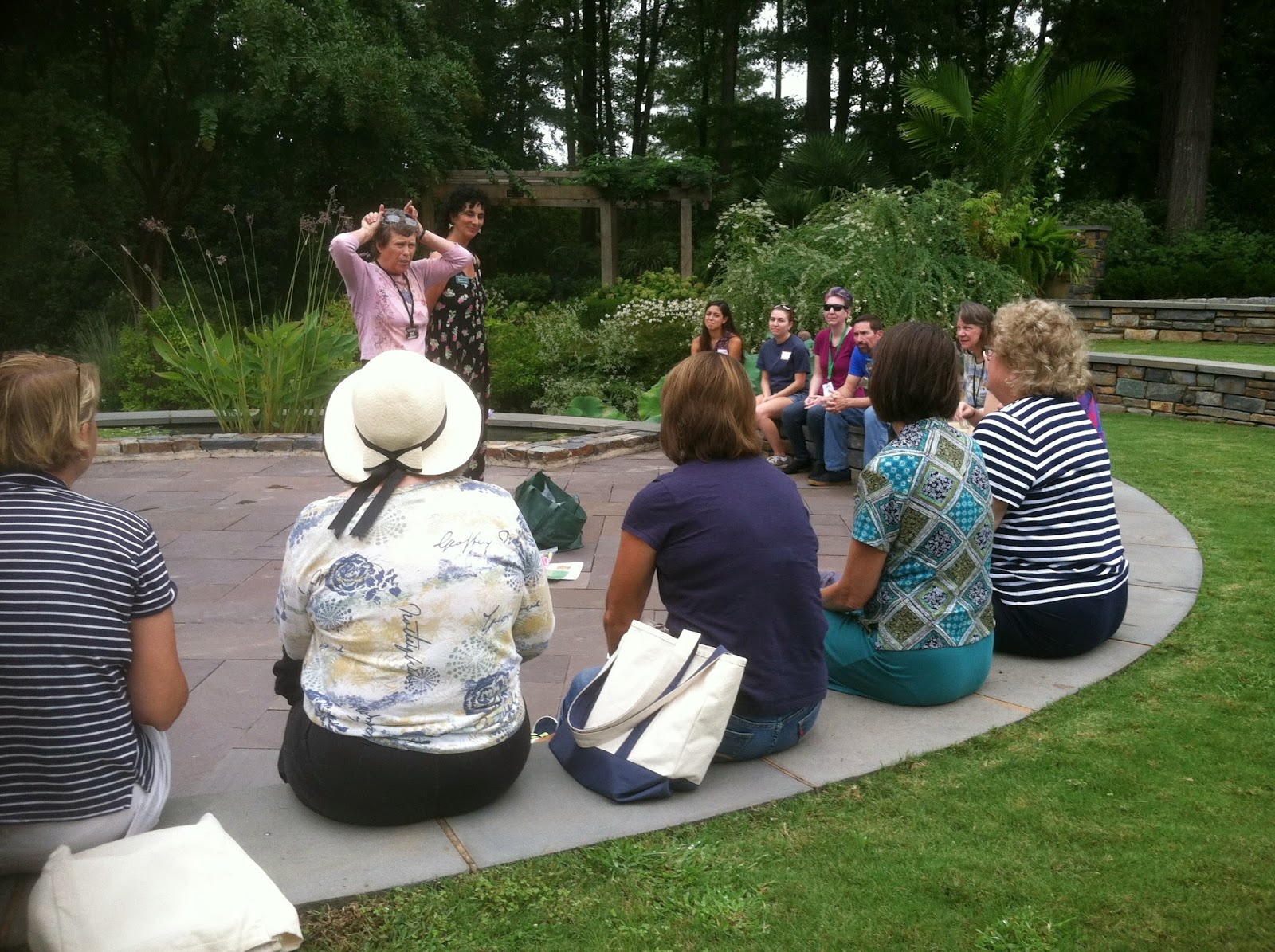Would you like to get more deeply involved at Duke Gardens, and help others appreciate all that the Gardens has to offer the Duke and Triangle community and beyond? Consider becoming a volunteer docent.
The next docent trainings take place over a series of dates in February and March, with separate sessions devoted to leading children's vs. adult programs. (Update: Please see current training dates on our website). Please call to register in advance.
At Duke Gardens, we strive to create an outdoor classroom experience for students from grades K through 12. Education program coordinator Kavanah Anderson says being a children's docent allows you to share what's great about the Gardens with visitors. Children's docents will lead or assist in a variety of programs and activities, including storytimes, nature walks, gardening demonstrations, homeschooling classes, and many other programs.
"It's a great opportunity to practice skills you already have, and discover new ones," Kavanah explained, "and it's a fun community to be a part of." Docents bring their own unique backgrounds to the Gardens and get to learn from each other as a group, as well as share that accumulated knowledge and skills with the children who visit.

For those who would like to work with adult groups, docent training begins March 3. Docents can give tours around the gardens, imparting specialized knowledge to visitors, including important historical and horticultural information about everything the visitors see and hear. Docents may also lead general tours, or be trained to lead one of Duke Gardens' many specialized tours.
After completing the docent training, volunteers can be further trained to give trolley tours. Chuck Hemric, director of volunteer services, says adult docents make visitors' trips to the Gardens even better.
"You hear all the stories from visitors with these enriched experiences," he explained. "As the Gardens continue to increase in popularity, we need more and more volunteers to provide that experience."
Chuck and Kavanah are also seeking bilingual docents to serve the growing and diverse number of visitors. Volunteers who speak both Spanish and English would be especially helpful.
Both Kavanah and Chuck emphasized how important volunteers are to the Gardens. "We couldn't do this without volunteer docents," Kavanah explained. Chuck agreed: "They're vital."
Schedules for both docent trainings are listed below. You may participate in one or both. For additional questions on the children's programs, please contact Kavanah Anderson at (919) 668-1708 or kavanah.anderson@duke.edu. For questions on the adult docent training, please contact Chuck Hemric at (919)-668-1705 or chemric@duke.edu.
Spring 2015 Children’s Programming Docent Training
Tuesday, Feb. 17, 9 a.m.-3 p.m. (basic logistics specifically for new docents)
Thursday, Feb. 19, 9 a.m.-3 p.m. (teaching and group management techniques for new and current docents)
Tuesday, Feb. 24, 9:30 a.m.-noon (program demonstration and teaching practice)
Thursday, Feb. 26, 9:30 a.m.-noon (program demonstration and teaching practice)
Tuesday, March 3, 9:30 a.m.-noon (program demonstration and teaching practice)
Thursday, March 5, 9:30 a.m.-noon (program demonstration and teaching practice)
Also, see below for curator-led training tours in March.
Adult Programs Docent Training, Spring 2015
March 3, 2-4 p.m.: orientation, overview and history of Duke Gardens
March 10, 2-4 p.m.: curator-led tour
March 17, 2-4 p.m.: curator-led tour
March 24, 2-4 p.m.: curator-led tour
March 31, 2-4 p.m.: curator-led tour













.jpg)
.jpg)

.jpg)
.jpg)

.jpg)
.jpg)


